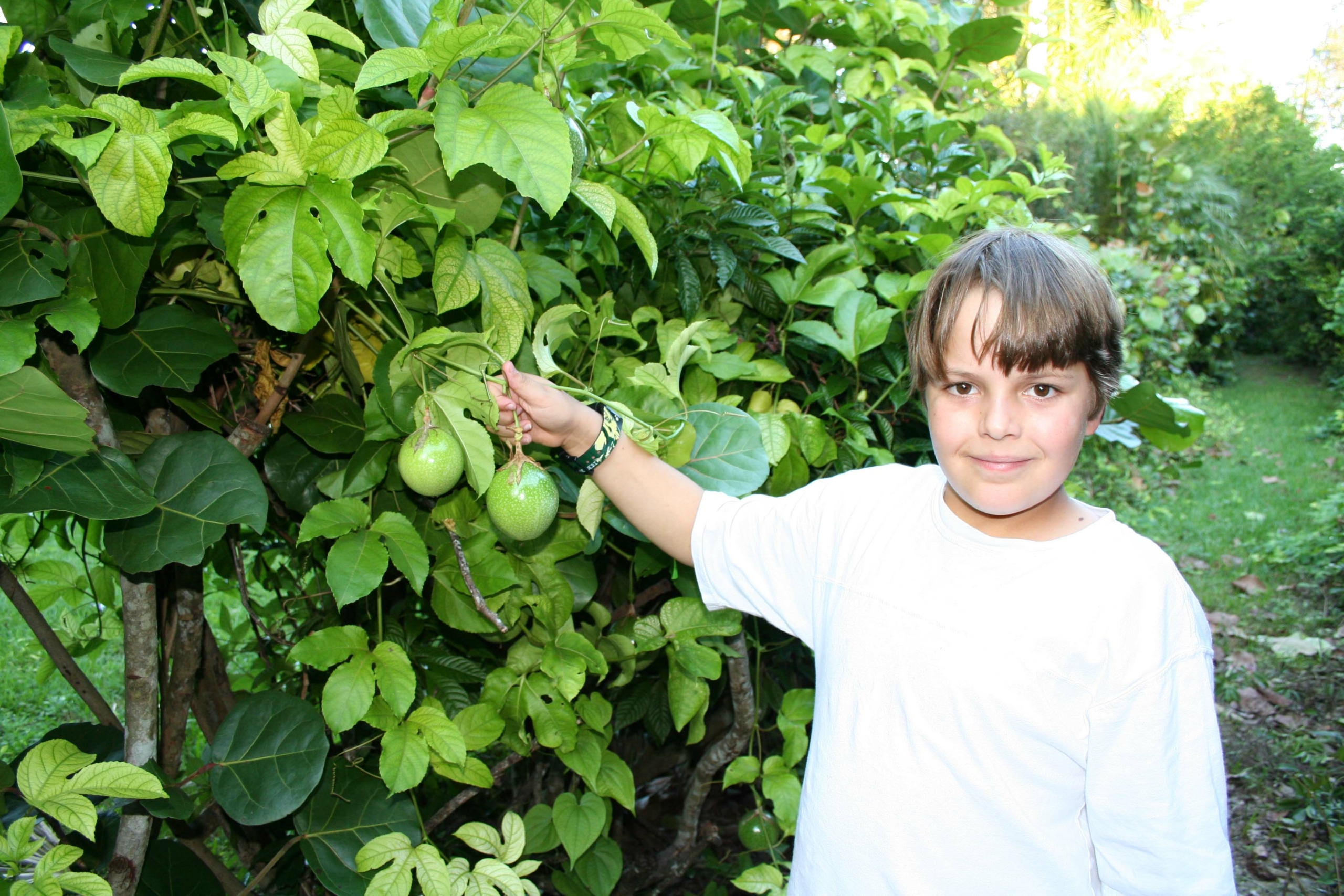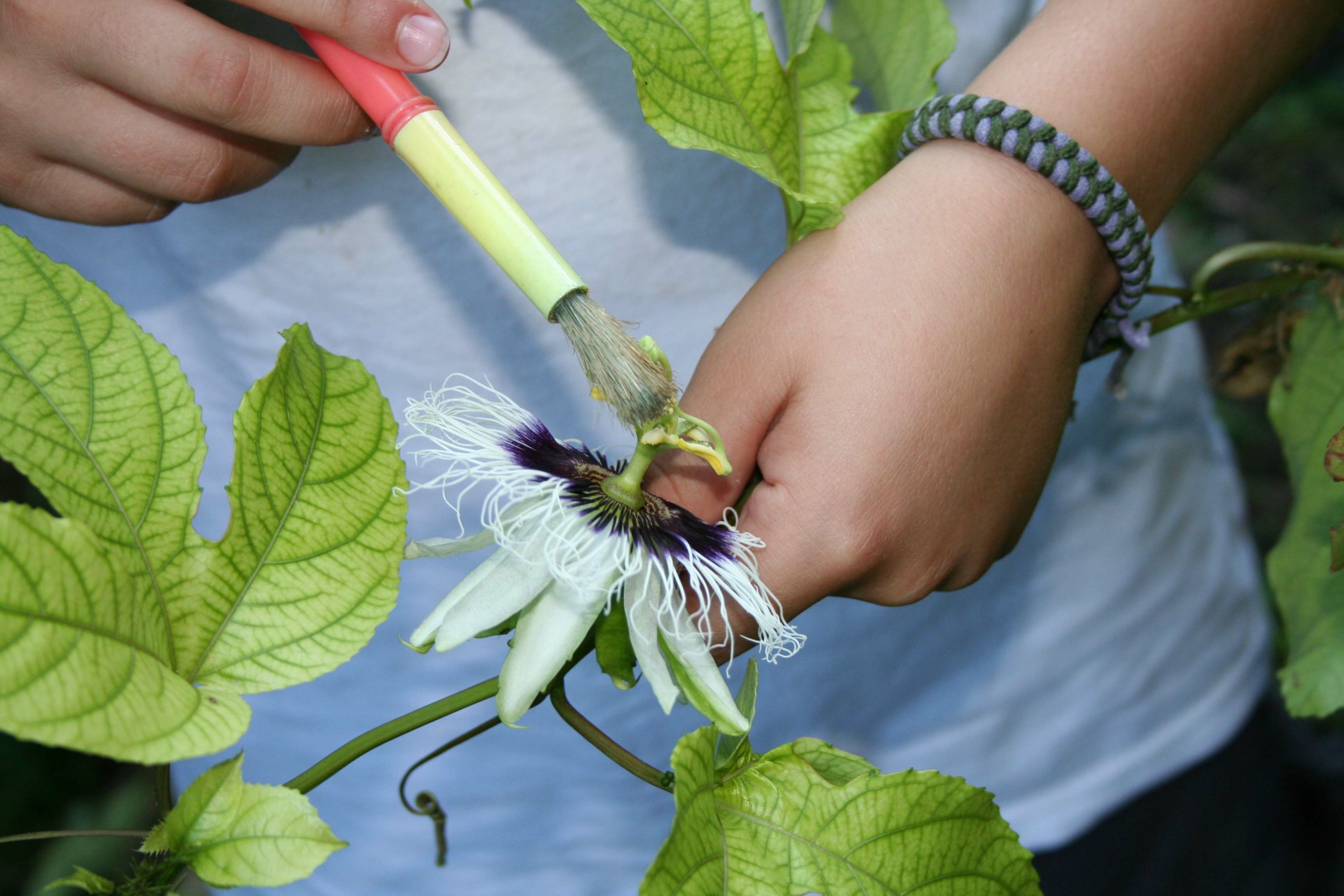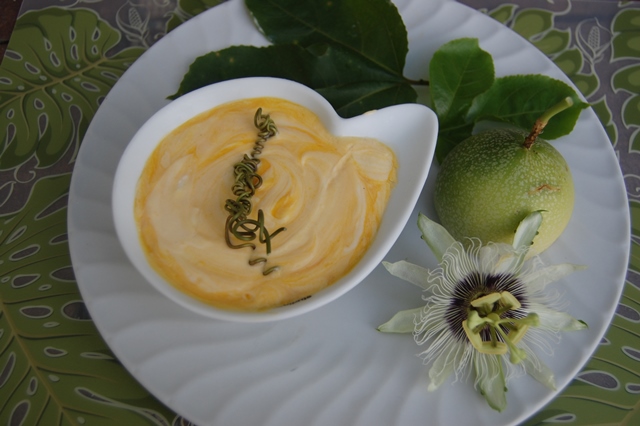Passion Fruit

BY NORIS LEDESMA
FAIRCHILD TROPICAL BOTANIC GARDEN
As published in the Miami Herald
Passion
fruit, Passiflora edulis, is definitely
a showstopper when it comes to tropical plants, and its aromatic fruit and
beautiful flowers will ignite your horticultural passion. The passion fruit,
unlike most tropical fruits, is not a tree but instead a climbing vine. This
vine is multifunctional, providing fruit and habitat for some of South Florida’s
most handsome butterflies, including the Zebra Longwing, Heliconius
charitonius.

There
are several species of vines in the Passiflora
genus that will attract butterflies, but P. edulis has the added benefit of bearing fruit.
Within this species, there are two distinct varieties of fruit: the more-common
purple and the rarer yellow. Both are native to South America, where the fruit is
known by names including granadilla, parcha and maracuyá.
The purple variety
originated in southern Brazil and is found across Paraguay and northern Argentina.
Less is known about the yellow variety, but most believe it originated in the
Amazon region of Brazil. Both varieties of passion fruit are almost perfectly
round and filled with tiny edible seeds wrapped in a golden jelly-like flesh
that is extremely juicy. The intensely tropical pulp is excellent in fruit
desserts like sorbets, beverages and savory sauces. The
purple passion fruit is preferred for eating fresh. The yellow passion fruit is
best suited for juicing and making preserves. When ripe, the fruit starts to
wrinkle on the outside.
In
addition to bearing delicious fruit, the flowers of P. edulis are also handsome, sporting petals that range from lavender
to white with a purple-pink center. The flowers must be hand-pollinated in
order to get fruit, as the insects that typically perform this task do not live
in South Florida. The best time to pollinate the blossoms is when they begin to
exude a delicious lemon scent, as soon as they open in late morning.
Pollinate
these flowers with a simple, small paintbrush, preferably using pollen from a
neighboring passion fruit. Each flower only lasts for one day, opening in the
morning and closing at sunset. Plants will produce flowers the second year
after planting and are able to fruit from June to November with hand
pollination.

Pollinating the flowers
Find
a site for your passion fruit in full or near-full sun and plant vines 10 to 15
feet apart. The vines will need support, so provide a trellis sturdy enough to
support a large vine. If left unchecked, the vines are capable of climbing and
possibly smothering nearby desirable trees and shrubs, so prune them regularly
by removing less vigorous growth and occasionally pruning back vigorous growth
to promote flowering.
Passion
flower vines are easily propagated from seed; however, vegetative propagation
from cuttings or grafting is the only way to insure the parent plant's
characteristics will be preserved.
Brazilian
Passion Fruit Pudding
Ingredients:
2/3 cup ripe
passion fruit (approximately 8 fruit)
1 tbsp
cornstarch
1 quart whole
milk
1/3 cup sugar
Pour the cornstarch and 1 cup of milk into a bowl and stir to dissolve. Set
aside.

In a saucepan, add sugar and remaining
3 cups milk and bring to a boil over medium heat. Remove from heat. Whisk
the cornstarch and milk mixture into the hot milk, then
return to the heat and stir over medium-low heat, stirring
constantly for 4 minutes. Remove from heat.
Cut 3 of the passion fruit in half,
scoop out the seeds, and rub through a sieve over a bowl, discarding the seeds.
Add to the mixture; stir until it reaches a pudding-like
consistency.
Divide into individual cups. Refrigerate for at least 2 hours or until set. Cut the remaining 5 passion fruit in half, and spoon equal amounts of the fruit over the puddings. Serve chilled.
Noris Ledesma is Curator of Tropical Fruit at Fairchild Tropical Botanic Garden.
